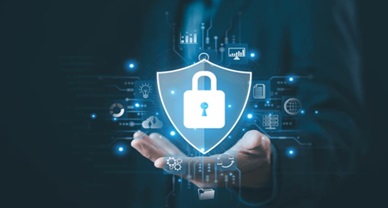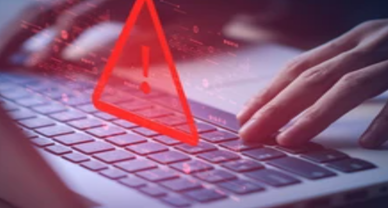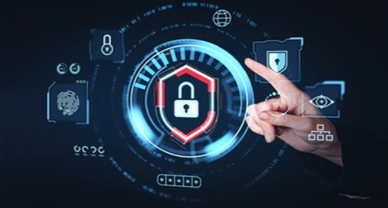The Cyber-Crimes in the Cyber-world
Abstract;
Since the world has indulged into major advancement of a greater technology, it has its own primary goods and bads which are habitual in the digital era and multi-technological facilitated world. In the late 1970s, sociologists and anthropologists like Alvin Toffler (author of Future Shock), Daniel Bell, and John Naisbitt approached post-industrial society theories, arguing that the current era of industrial society is coming to an end, and services and information are becoming more important than industry and goods, which means keeping information with the help of technology and providing any services is majorly adding values to the turning era of the cyber world.
Introduction to the cyber-crime and the cyber-world;
The cyber-crime can be defined as any criminal activity that involves advanced technology specially; any malfunctioning in Computers, Software’s designed, Networked devices or any other related device can be considered cyber-crime. The study says most cyber-crime is committed by cybercriminals or hackers with some instances that the cyber-crimes are carried out with the intention to generate monetary profits by the cybercriminals or to directly damage or disable the computer functioning by breaking into the confidential stored data or information by any organization or person and sometimes to spread malware, illegal information, any restricted images etc. A computer plays a highly significant role in business, education, and other sectors. Cybercrime offers a severe danger not only to business, entertainment, and government, but also to individual security as well as country’s economic security. Cyber-crime could be done through a variety of means, including identity theft, online fraud, cyberbullying, and the spread of malware like viruses or ransomware. It has the potential to cause significant damage to individuals, Organisations, and even government systems. As the internet has become an essential tool for work, shopping, and communication, cybercrime has emerged as as a serious concern.
Types of Cyber-crime;
It’s extremely important to know and defend oneself against the cyber-crime. We may avoid problems via usage of secure networks, frequent upgrading of software, and not to engage in actions that may seem suspicious online. Cybercrime, particularly over the Internet, has increased as computers have become important to every area, including business, entertainment, and government. Cybercrime may endanger a person or a nation’s security and financial health. Cyber-crime encloses a wide range of activities, but these can generally be divided into two categories:
- Criminal activity targeting computers using viruses and other types of malware.
- Criminal activity using computers to commit other crimes.
Criminal activity targeting computers using viruses and other types of malware.
Cybercriminals can infect computers with malware in order to harm or disable them. They may also employ malware to erase or steal information. A Denial-of-Service (DoS) attack occurs when cybercriminals block people from accessing a website or network, or when a firm is unable to provide a software service to its clients.
Cybercrime is defined as the use of computers to perpetrate other crimes, such as spreading malware, unlawful information, or illicit photographs via computers or networks.
Cybercriminals frequently engage in both activities simultaneously. They may infect computers with viruses first, then use them to disseminate malware to other computers or over a network. Some countries recognise a third type of cybercrime: when a computer is used as an accessory to a crime. One example is utilising a computer to store stolen information.
The following examples of Cyber-crime are;
- Malware:
A malware attack occurs when a computer system or network becomes infected with a computer virus or another sort of malware. Cybercriminals may utilise a malware-infected machine for a variety of objectives. These include stealing private data, exploiting the computer to commit other crimes, or causing data loss.
The WannaCry ransomware attack, which occurred worldwide in May 2017, is a well-known example of a malware attack. WannaCry is a sort of ransomware, which is software designed to extract money from victims by encrypting their data or devices. The malware exploited a Microsoft Windows vulnerability.
When the WannaCry ransomware outbreak occurred, it infected 230,000 systems in 150 countries. Users were locked out of their files and received a message demanding a Bitcoin payment to restore access.Worldwide, the WannaCry cyberattack is believed to have cost $4 billion in financial losses. To this day, the attack is notable for its sheer scale and effect.
- Phising attack:
These are spoof emails or messages that purport to be from a legitimate website but solely ask for sensitive information, such as credit card numbers or account passwords. One could characterise phishing as an exceptional of the most prevalent online dangers.
In 2018, a well-known instance of a phishing fraud occurred during the World Cup. Our research, 2018 Fraud World Cup, claims that emails addressed to football enthusiasts were part of the World Cup phishing scam. With fictitious free vacations to Moscow, the site of the World Cup, these spam mailings attempted to lure supporters. Personal information was collected from anyone who opened and clicked on the links in these emails. Spear-phishing messages are usually designed to appear as though they are from a reliable source, in contrast to mass phishing efforts, which have a very generic appearance. For instance, they are designed to appear as though they were sent by the IT manager or the CEO. They could not have any visible indicators that they are fraudulent.
Criminal activity using computers to commit other crimes.
These crimes include identity theft, financial fraud, and cyberstalking.
- Cyberstalking:
This is regarded as a crime since it involves spreading fear and mental anguish by intimidating or threatening someone online. This could be described as involving frequent unsolicited messages, ongoing surveillance, or threats. Cyberstalking is the practice of harassing or following someone online using the internet and other technologies. Additionally, it can be illegal in the US. Although it can take many different forms, it’s basically the digital counterpart of someone following you around, however instead of that, they’re constantly throwing out notifications on your phone. A growing issue that can cause significant emotional discomfort is cyberstalking.
- Financial Fraud:
This is an instance of a cybercriminal employing deceptive investment offerings, business email hacking, and credit card information from another person to influence the victim online in order to steal money.
- Identity Theft:
Usually, the identity of the people whose information is taken is stolen with the sole objective of impersonating them, either to embezzle their money or funds from their account or even for malevolent purposes. The victim’s credit score is always lowered, and in the worst instance, the account or loan was monetarily abused through improper activities.
- Intellectual Property Theft:
The term “intellectual property theft” describes the online theft of copyrighted material or trade secrets, which harms people and businesses financially and competitively.
- Cyber Terrorism:
It occurs when people commit violent crimes that have the potential to injure or kill others using computers and the internet. It entails endangering residents’ safety through the use of technology. using the internet to carry out terrorist attacks, spread false information, or target computer networks that are essential to the country.
Impact of cybercrime;
Cybercrime is generally increasing. Security threats rose 31% between 2020 and 2021, according to Accenture’s State of Cybersecurity Resilience 2021 report. Every year, the number of attacks per organisation rose from 206 to 270. Since many businesses hold sensitive data and customer personal information, attacks on businesses also damage individuals.
According to insurance provider Hiscox, a single attack, whether it be malware, ransomware, a DDoS attack, or a data breach, costs businesses of all sizes an average of $200,000. Many of the impacted companies cease operations within six months of the incident.
In 2021, Javelin Strategy & Research released an Identity Fraud Study that revealed $56 billion in identity fraud losses for the year.
Cybercrime may have a significant impact on both people and businesses, mostly causing financial harm but also harming reputations and eroding confidence.

Financial Losses;
Theft and fraud can result in significant losses for both individuals and the organisations involved.
Reputational Damage;
Depending on the legal outcomes of cases, some people may realise that their reputation becomes a problem that they could lose.
Operational Disruption;
Such an event results in a shutdown and, as will be discussed later, a loss of productivity.
How to Protect Yourself Against Cybercrime?
- Use strong password;
Avoid writing down your login and password combinations and keep them unique for every account. Make your passwords complex since weak passwords are easily hacked using techniques like the rainbow table attack and brute force assault. That is a mix of special characters, numerals, and letters.
- Use trusted antivirus in devices:
Use reliable and cutting-edge antivirus software on both home PCs and mobile devices. As a result, several virus attacks on devices are avoided.
- Enable Two-Factor Authentication:
For an additional degree of protection, enable two-factor authentication on your accounts, which necessitates a second verification step.
- Keep your device software updated:
Update the system software simultaneously whenever you receive updates because older versions might occasionally be readily compromised.
- Use secure network:
Public Wi-Fi are vulnerable. Avoid conducting financial or corporate transactions on these networks.
- Never open attachments in spam emails:
Email attachments in spam emails are one way that virus assaults and other cybercrimes infect computers. You should never open an attachment from someone you don’t recognise.
- Software should be updated:
operating system should be updated regularly when it comes to internet security. This can become a potential threat when cybercriminals exploit flaws in the system.
One of the risks that clearly increases the dangers of using personal computers is cyber-crime, which also affects businesses and governments. One can lessen the effects of these hazards by listing the many kinds of cybercrime, the difficulties that exist, and taking preventative action. Even with all of this, there are still many problems that need to be addressed as the technology develops further. This merely implies that one must be vigilant and sensitive to the new hazards that the online world presents.
Author: Anushka kesharwani, A Student at Bharti Vidyapeeth Deemed to be university, in case of any queries please contact/write back to us at support@ipandlegalfilings.com or IP & Legal Filing
Reference;
https://www.kaspersky.com/resource-center/threats/what-is-cybercrime
https://www.geeksforgeeks.org/cyber-crime/
https://blog.ipleaders.in/cyber-crime-laws-in-india/#Introduction

